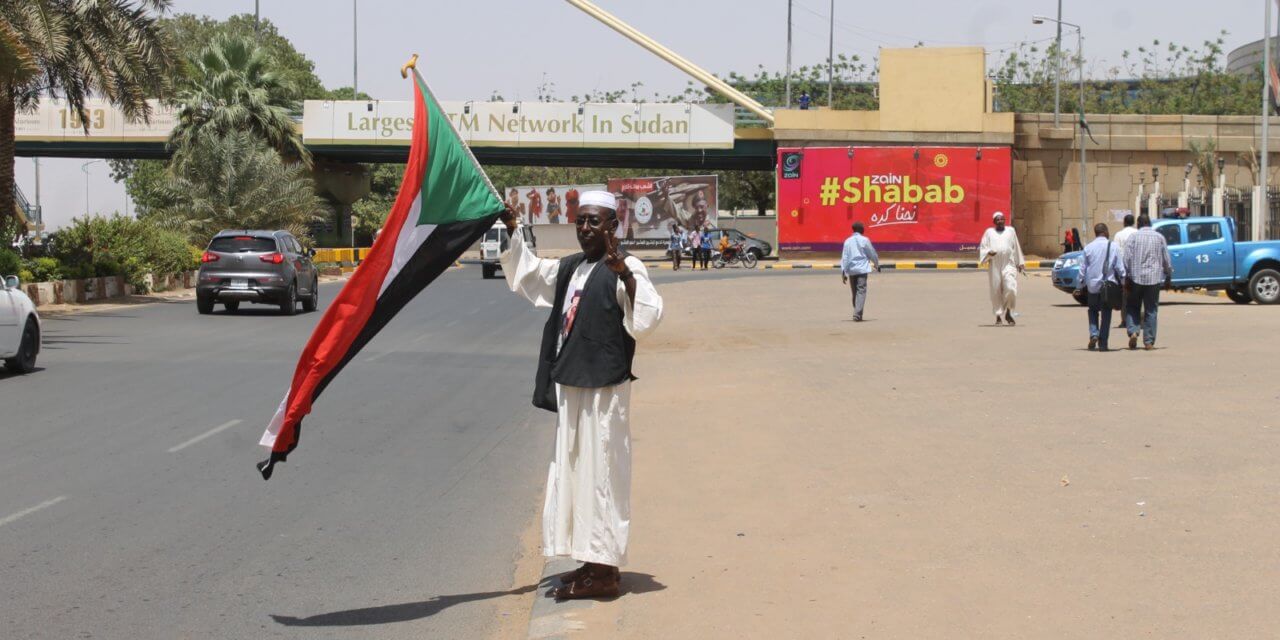The ongoing violent conflict in Sudan has unexpectedly revitalised ancient travel routes, once pivotal in trade, now crucial for civilians navigating the turmoil and transporting their assets safely.
The war that started in April 2023 drastically reshaped daily life in Sudan. In many ways, it impelled residents to embrace old habits, leading to a considerable migration from the capital to various states. One unexpected consequence was a revival of historical travel paths that had been sidelined after the development of modern roadways connecting the three cities of the Khartoum capital: Bahri, Omdurman, and Khartoum.
Many of these bygone routes were, in ancient times, intertwined with commerce. Arguably the most renowned is the “Forty Trail”, once the main conduit for trade between Kordofan, Darfur, and Egypt. Its name originates from the forty-day caravan journey typical on this trail. The decline in their use was attributed to the growing prevalence of air or river transport, railways, or simply a preference for contemporary roads.
The Export Route, connecting Omdurman to Bara, was one of these old pathways paved in 2019. Extending 342 kilometres, it provides a vital link between the capital and the production hotspots in Kordofan, Darfur, and central and western Sudan.
A Compelling Escape
When rogue elements of the Rapid Support Forces began seizing private assets, many residents strategised alternative means to transport valuable possessions like money, gold, and vehicles to areas beyond the force’s reach. This meant circumventing checkpoints on main roads out of Khartoum. This dilemma spurred some to reconsider ancient routes leading to locations like Shendi and Atbara in the Nile State or Madani in the Gezira State. Others journeyed back to Khartoum to safeguard their assets.
“I had hoped the conflict would end swiftly.”
Ahmed’s trip to his residence in the Salama district of Kadro, north of Bahri, took eight hours, over twice the usual duration. He opted for a perilous route via Atbara and Shendi, before boarding buses into Bahri city. “I had hoped the conflict would end swiftly, and I took a risk returning via an ancient path for vital documents,” Ahmed recounted.
On reaching the Samrab district, south of Bahri, Ahmed negotiated with a motorcyclist for a discreet path home, avoiding conflict-zone checkpoints. Their conversation touched on a recent skirmish in Samrab. “The ordeal was palpable, and I remember pondering my safety during that journey,” Ahmed said. After safely reaching his destination, local advice led him to retrace his journey to ensure his belongings remained safe. He respected this guidance, well aware of the inherent risks he’d encountered.
The Renewed Relevance of Old Routes in Khartoum
These rediscovered paths have been pivotal for Khartoum’s civilians, facilitating the safe transport of belongings and deterring theft. From Bahri, vehicles traverse the Al-Batana region en route to Shendi or Madani. Journeys from Omdurman take a northern arc, crossing the Nile River towards Shendi, before proceeding to destinations like Madani, Kassala, or even further north. Previously, this trip took mere hours, but it now spans at least 18 hours, sometimes even days.
Emerging transport routes between Atbara and Madani, via Shendi and Al-Batana, have stimulated local job markets. Yet, the main beneficiaries are the so-called “road experts”. They assist first-time travellers on these tracks, ensuring they don’t lose their way, for a fee.
“I can suggest the best routes tailored to any vehicle.”
Al-Awad, well-versed in the Al-Batana trails, proudly states, “I can suggest the best routes tailored to any vehicle, from compact cars to SUVs, ensuring a smooth journey.” He added that the Rapid Support Forces’ habit of commandeering vehicles has driven many to evacuate them, creating an unexpected livelihood for him. Fees for guiding a single vehicle can reach 150,000 Sudanese pounds, equivalent to roughly 300 US dollars. For larger groups, a convoy rate offers a discount, as detailed by Al-Awad.
Both Ahmed and Al-Awad concur that the wartime circumstances revealed the hidden value of these paths. Al-Awad believes these aren’t newly charted paths but ancient ones momentarily overlooked. “When the need arises, these paths resurface, providing a lifeline across the desert to intended destinations,” he says.
According to the United Nations Office for the Coordination of Humanitarian Affairs (OCHA), more than 6 million people have been displaced within and outside Sudan since mid-April 2023. The displaced are from eight states, with the majority – about 3.4 million people (68 per cent of all internally displaced) – originally from Khartoum.
Most have sought refuge in River Nile followed by South Darfur, East Darfur, Aj Jazirah, White Nile, North Darfur, Northern, Sennar and other states. About 1.2 million people have crossed into the neighbouring Central African Republic, Chad, Egypt, Ethiopia and South Sudan as of 10 November, according to the UN Refugee Agency (UNHCR).
______
This story was produced by Media in Cooperation and Transition (MiCT) and the North Africa Media Academy (NAMA), in collaboration with the Al Adwaa Media and Journalism Services Centre, and financed by the German Federal Ministry for Economic Cooperation and Development (BMZ). The views expressed in this publication do not represent the opinions of MiCT, NAMA, Al Adwaa, or BMZ.

